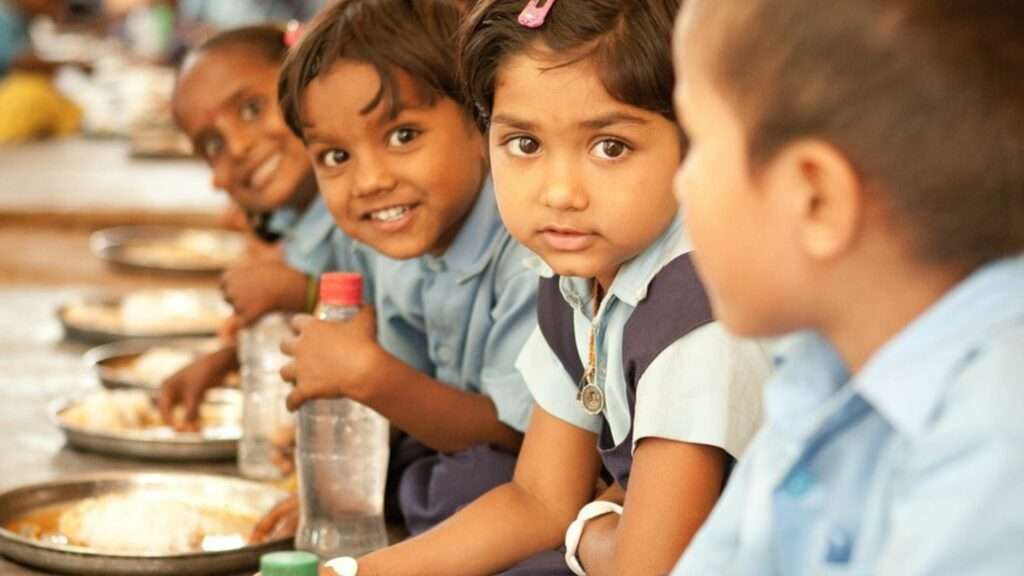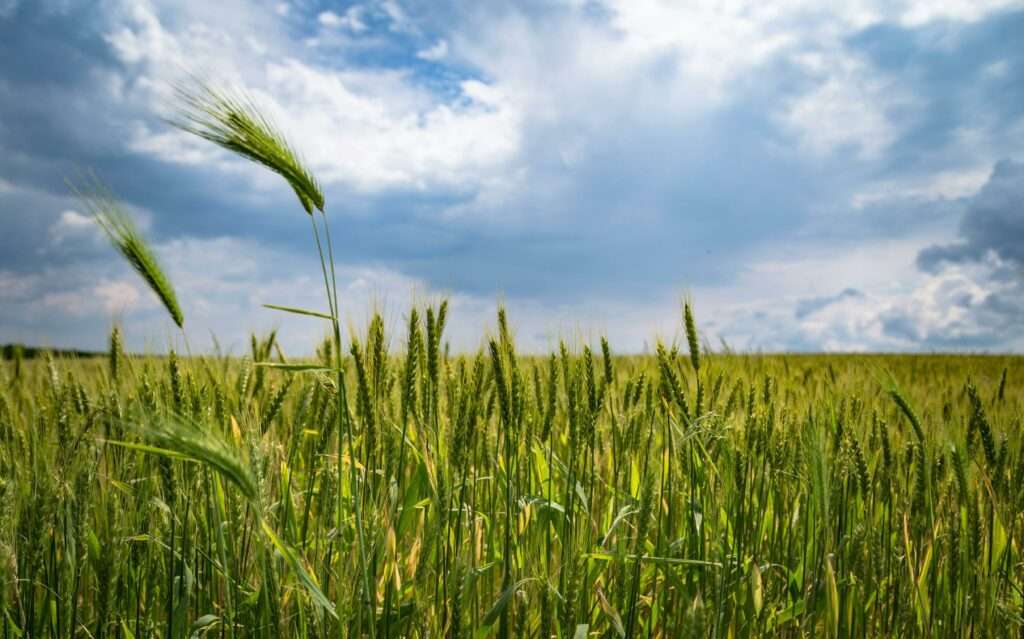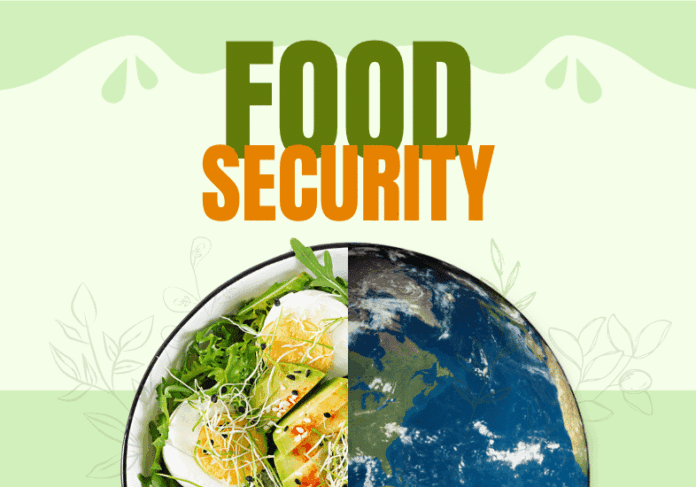Food security is defined as a situation that exists when all people, at all times, have physical, social, and economic access to sufficient, safe, and nutritional food that meets their nutritional requirements and food preferences for an active and healthy life. Four confines of food security have been linked in line with different situations. 1) Vacuity d National. 2) Availability of Household. 3) Application d Individual. 4) Stability – may be considered as a time dimension that affects all situations
All four of these conditions must be complete for full food security. More recent developments emphasize the significance of sustainability, which may be considered as the long- term time( fifth) dimension to food security. Food security is stylishly considered as a causal, linked pathway from production to consumption, through distribution to processing, honored in a number of disciplines, rather than as four “ pillars ”.
Food security and food instability are dynamic, complementary, and time-dependent, and the attendant status depends on the commerce between the stresses of food instability and the managing strategies to deal with them. Universal pointers for measuring food security are grueling. Different pointers may be applied to different situations of food security.
Measuring food security at the ménage position involves five orders of pointers: salutary diversity and food frequency, spending on food, consumption actions, existential pointers, and tone-assessment measures. Food security, nutrition, and sustainability are increasingly bandied in the same environment.
The integration of food security as an unequivocal part of the sustainability docket would go a long way towards such a thing. The final common pathway of all these sweats is towards sustainable food security and nutrition for our Earth. Description of Food Security Food security is a flexible conception as reflected by the numerous attempts to define it in exploration and policy operations.
The conception of food security began some 50 years agone, at a time of global food crises in the early 1970s. Indeed, two decades ago, there were about 200 delineations for food security in published writings ( Maxwell and Smith, 1992), showing the context-dependent features of the description.

The current extensively accepted description of food security came from the Food and Agriculture Organization( FAO) periodic report on food security “ The State of Food Insecurity in the World 2001 ” Food security( is) a situation that exists when all people, at all times, have physical, social and profitable access to sufficient, safe and nutritional food that meets their salutary requirements and food preferences for an active and healthy life( FAO, 2002).
The last modification to this description happened at the 2009 World Summit on Food Security, which added a fourth dimension – stability – as the short-term time index of the capability of food systems to repel shocks, whether natural or man-made ( FAO, 2009).The
confines of Food Security Four confines of food security have been linked according to the description( FAO, 2008).
1) The vacuity of food produced locally and imported from abroad. 2) Availability. The food can reach the consumer( transportation structure), and the ultimate has enough wealth for purchase. To similar physical and profitable availability is added socio-artistic access to ensure that the food is culturally respectable and that social protection nets live to help the less fortunate. 3) Application. The existence must be suitable to eat acceptable quantities both in volume and quality in order to live a healthy and full life to realize his or her eventuality. Food and water must be safe and clean, and therefore, acceptable water and sanitation are also involved in this position.
A person must also be physically healthy to be able to digest and use the food consumed. The fourth sphere of Stability deals with the capability of the nation/ community/( ménage) person to repel shocks to the food chain system, whether caused by natural disasters( climate, earthquakes) or those that are man-made ( wars, profitable heads). Therefore, it may be seen that food security exists in some situations. Vacuity- freeman; Availability – Household; Application – Individual; Stability – may be considered as a time dimension that affects all the situations. All four of these conditions must be met for full food security.
Still, not all the rudiments in food security are of equally significant importance as inferred by the pillar analogy. Their weightings are environment and country-specific ( Berry et al., 2015). For illustration, in numerous developing countries, availability depends on the transport structure, which may limit the physical access to food; In contrast, in developed countries, profitable access is the main hedge for food security.
After a natural disaster, e.g., an earthquake, the viability, availability, application, and stability are all major problems. In these different surroundings, the weights of the four confines should surely not be equal. Rather than pillars, a better analogy is using a pathway to describe the relations among the four confines of food security. This analogy was used by The State of Food Insecurity in the World 2013( FAO, WFP, and IFAD, 2013) to show the links from food product( vacuity) to ménage( availability) to existent (application).
Reducing these quantities is a major challenge for securing world food security in the future. From a systemic view, rotundity may also be considered a type of food waste. Linking Food Security to Sustainability. The notion of Sustainable diets links sustainability with food security to ensure holistic,c sustainable food systems, as can be seen from their separate delineations.
Sustainable diets are defined as those that are based on bones that “ are defensive and regardful of biodiversity and ecosystems, culturally respectable, accessible, economically fair and affordable; nutritionally acceptable, safe and healthy; while optimizing natural and mortal coffers ”( FAO, 2012). While “ a sustainable food system “ is a food system that ensures Food Security and Nutrition( FSN) for all in such a way that the profitable, social and environmental bases to induce FSN for unborn generations aren’t compromised ”( HLPE, 2014, 2017).

The content is taken up at some length in the composition on generalities of Food Sustainability( Anderson, 2018a). It has been internationally agreed that climate change is a threat to the sustainability of food security. Still, the conditioning involved in food systems accounts for some 20 – 30% of all mortality-associated greenhouse gas( GHG) emissions, and, similarly, contributes to climate change( Garnett et al., 2016a). There might be a trade-off relationship between dwindling mortal associated GHG and guaranteeing food security under the current prevailing food system.
Thus, a methodical and intertwined approach is demanded to meet the short- and long-term conditions of FSN, meanwhile, to mollify the negative environmental impact due to GHG from the conditioning involved in the food system itself. Though what sustainable food systems actually look like is still unclear, our understanding is constantly evolving( Garnett et al., 2016b).
Description of Food Insecurity Food Insecurity( FINS), on the other hand, occurs when there are problems at any one position in the food product-consumption pathway. The upstream dimension/ position of FINS largely affects those downstream. The description of FINS is “ whenever the vacuity of nutritionally acceptable and safe foods, or the capability to acquire respectable foods in socially respectable ways, is limited or uncertain ”(Expert Panel, 1990).
Food instability, as virtually measured in the United States, is endured when there’s( 1) query about unborn food vacuity and access,( 2) insufficiency in the quantum and kind of food needed for a healthy life, or( 3) the need to use socially inferior ways to acquire food( National Research Council, 2006). piecemeal from the most common constraint d lack of profitable coffers, food instability can also be endured when food is available and accessible but can not be employed because of physical or other constraints, similar to limited physical functioning of the senior or impaired( National Research Council, 2006).
Still, with the emphasis on health equity, focus should be given to the people under the most underprivileged conditions. They’re under colorful natural and man-made stresses such as cataracts, famines, conflicts, and wars. They also have a critical demand for better management strategies for food instability. Paradoxically, the groups of subjects most food insecure, similar to settlers, displaced persons, and the homeless, aren’t generally included in checks of food security, which accordingly underrate the problem.
Connections between Food Security and Food Insecurity
Food security and food instability are dynamic, complementary, and time-dependent, and the attendant status depends on the commerce between the stresses of food instability and the managing strategies to deal with them. The stresses of food instability may occur at any point along the food security pathway – Vulnerability, Availability, Application, and Stability.
The inspired managing responses may occur in public, ménage, or individual situations. The two processes are interrelated linearly with iterative feedback circles similar to stress, leading to managing responses that may or may not be acceptable, thereby taking variations in the managing strategies until food security is recaptured( Peng and Berry, 2018, handwriting under modification).
Dimensions of Food Security Universal pointers for measuring food security are grueling. They need to be extensively accepted as correct and nicely objective and to be homogeneous across time and space. Different pointers may be applied to different situations of food security.

Pointers for Global Food Security
Suitable pointers for global food security must be dependable, unremarkable, and available for the maturity of world countries. There is still no accepted agreement on the optimal bones for food security( Berry et al., 2015). The State of Food Insecurity in the World 2013: The Multiple Confinements of Food Security.
Salutary Diversity and Food Frequency
This order of pointers generally captures the number of different kinds of foods or food groups that people consume and their frequency. The result is a score, showing the diversity of diets.
The Food Consumption Score( FCS) and the Household Dietary Diversity Score( HDDS)
These are two common pointers measuring salutary diversity( Maxwell et al., 2013; FANTA, 2006; FAO, 2010). Spending on Food People who spend less on food have been considered less secure in ménage food security( Maxwell et al., 2013; Smith et al., 2006).
Consumption Actions
This order of pointers measures actions related to food consumption, therefore affecting food security laterally. The most extensively known index in this order is the managing Strategies Index( CSI), with a docked interpretation of “ reduced CSI ”( rCSI)( Maxwell and Caldwell, 2008).
Another well-known index is the Household Hunger Scale, applied in more severe actions( Maxwell et al., 2013). Experiential pointers Household Food Insecurity Access Scale( HFIAS) and a culturally-stable subset of HFIAS, did Household Hunger Score( HHS) are landing ménage actions signifying inadequate quality and volume.
Some transnational associations, including USAID and FAO, have espoused and promoted the HFIAS and HHS( Maxwell et al., 2013). Lately, the Voices of Hunger or Food Insecurity Experience Scale( FIES) has been used in worldwide checks( FAO, 2018).
Tone – Assessment Measurement
Introduced recently, and used by Gallup bean( Headey, 2011), these measures are largely private and may be too easy to manipulate in check. It’s extensively accepted that all these pointers represent some aspects of the multidimensional nature of food security. Still, no single index captures the complete picture of ménage security. In addition to grading the pointers, Maxwell also compared these measures and specified the confines denoted by each index( Maxwell et al., 2013).
Monitoring of Food Security( 1990 – 2015) The 1996 World Food Summit assigned FAO the responsibility for covering progress towards the ideal of the Plan of Action, reducing by half the number of estimated undernourished people by 2015. From the data release by the FAO, the overall frequency of undernourishment has been dwindling from 14.8 in 2000 to 10.7 in 2015( FAO, 2016), showing the overall enhancement in global food security.
Still, in 2016, the number of chronically undernourished people in the world is estimated to have increased to 815 million, from less than 800 million in 2015( FAO, IFAD, UNICEF, WFP and WHO, 2017). This recent increase is a signal of a reversal of trends.
The food instability has worsened in particular in corridors of sub-Saharan Africa, South-Eastern Asia, and Western Asia, and these downfalls have been observed most especially in conflicts and conflict combined with famines or cataracts. Climate change may also be intertwined. The limitation of the current parameter for covering food security – frequency of undernourishment – is that it reflects only one of the triadic burden of malnutrition, videlicet undernourishment, micronutrient insufficiency, and over-nutrition.

To demonstrate and compare the overall nutritive status at the global, indigenous, and public situations, the Global Nutritional Index( GNI) has been developed( Rosenbloom et al., 2008) and streamlined( Peng and Berry, 2018). The overall trends of the GNI from 1990 to 2015 showed a drop in nutrition and an increase in over-nutrition, which has become a major cause of malnutrition worldwide( Peng and Berry, 2018). This trend poses new challenges to achieving overall food security and nutrition.
A sustainable food system( HLPE, 2017) may be the framework to achieve a possible result. Food security, nutrition, and sustainability are increasingly bandied in the same environment. Integrating food security as an unequivocal part of the sustainability docket would go a long way towards such a thing. The final common pathway of all these sweats is towards sustainable food security and nutrition for our Earth.
Major Conditioning Includes
• Strengthening safety nets to ensure that vulnerable families have access to food and water, and plutocrats in their pockets to make vital purchases.
• Delivering expedited exigency support by fast-shadowing backup through systems to respond to emergencies.
• Engaging with development mates to address food security challenges. Instruments include rapid-fire diagnostics and data-grounded monitoring instruments and hookups similar to the Short-term Action Medium and the Agriculture Observatory.
• Promoting husbandry systems that use climate-smart ways, and produce a further diverse blend of foods, to ameliorate food systems’ adaptability, increase ranch inflows and enable lesser vacuity and affordability of nutrient- thick foods.
• Improving force chains to reduce post-harvest food losses, ameliorate major food distribution channels’ hygiene, and better link product and consumption centers.

• Applying an integrated “ One Health ” approach to managing pitfalls associated with beast, human, and environmental health.
• Supporting investments in exploration and development that enable the micronutrient content of foods and raw materials.
• Championing policy and nonsupervisory reforms to ameliorate the effectiveness and integration of domestic food requests and reduce barriers to food trade.
• Working with the private sector, government, scientists, and others to strengthen capacities to assess and manage food safety pitfalls in low and middle-income countries.
Also Read – Demystifying Anaemia


